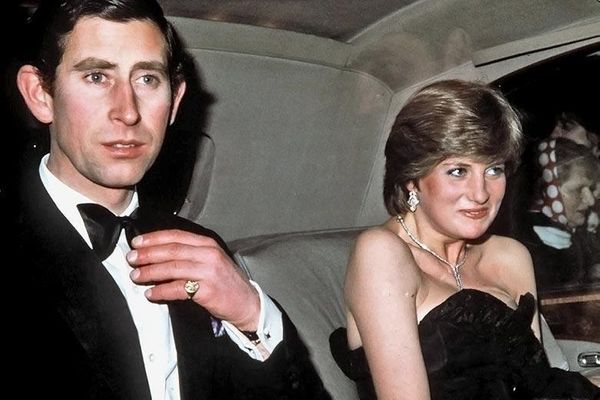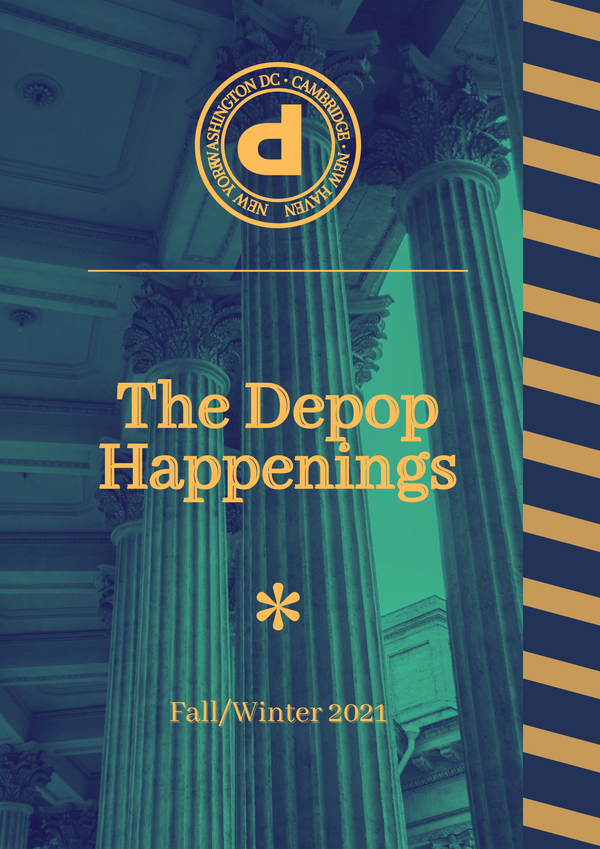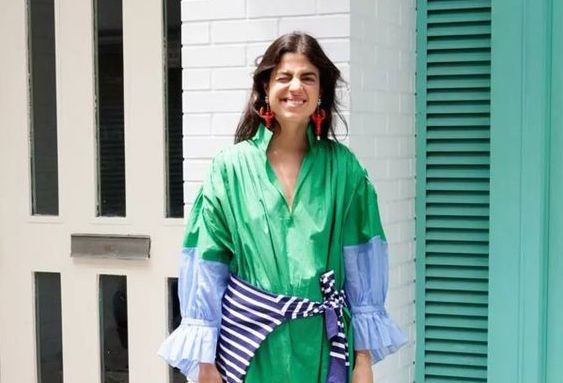by Mikaela Dery
If you are in your twenties, you may never have experienced life without Princess Diana nostalgia, because your mother—as she likes to remind you—was the same age as her. She probably spoke to you about her in the kind of reverent tone that is usually reserved for a deeply beloved, deceased relative. It’s easy to think we are sleeper agents who have internalized our mothers’ adoration for Diana and been activated by the latest season of The Crown; but the newly minted Diana fervor is not confined to the series. A biopic titled Spencer, starring Kristen Stewart, is due this year, as is a musical, which started previews last spring before theaters closed. It is slated to be released on Netflix. Our collective fixation with Diana has always been a morbid one, but never more so than this week, when Meghan Markle, her daughter-in-law, detailed a struggle with the royal family that closely echoed her own.
Contemporary fashion has been the epicenter of the Diana revival. In 2017 (the 20th anniversary of Diana’s death) Virgil Abloh created a collection for Off-White inspired by Diana’s slouchy Sloane Square dresses, aerobic bike shorts, and ‘80s power suits. In 2019, Hailey Bieber recreated paparazzi photos intentionally styled to emulate Diana’s athleisure looks from the 1980s for Vogue Paris. It has been a mainstay on Instagram mood boards ever since. Last year, the preppy, downtown label Rowing Blazers collaborated with Warm & Wonderful and Gyles & George, small British brands known for making two of Diana’s most famous knitted sweaters, and replicated them exactly. Each retails for almost $300 and sold out almost as soon as it was released online. In the run-up to The Crown’s and Rowing Blazers’ synergistic releases, you would have been hard-pressed to walk down a street in lower Manhattan and not see an ad with a Diana lookalike donning the reproduction.
It’s easy to understand the adoration for Diana from the fashion world. I am as guilty as anyone of wanting to emulate her eclectic, endlessly chic wardrobe. There is also the sense that by understanding her fashion choices, we come closer to understanding Diana herself. In her recent analysis of the new wave of Diana nostalgia, Vanessa Friedman posited that Diana used her clothes as a “personal weather vane, not to advance the agenda of state but for direct communication to the outside world, even when she was simply smiling and standing by.” Rachel Syme said something similar in The New Yorker about the black sheep sweater. “She wasn’t fully muzzled, but she wasn’t fully free to speak her mind, either,” she wrote, “so her clothes transmitted messages for her.”
It’s a theory that is likely correct, to some degree. The clothing one wears certainly says something about them. For centuries women of status, from Marie Antoinette to Michelle Obama, have used their attire as a tool of communication. But the process of interpreting messages encoded in knitwear can be a fraught business. The contemporary recreations of Diana’s style usually decide that the messages Diana’s clothing transmitted were that she was a woman in control. It is a vague feminist narrative that asserts her clothing was an outward expression of inner strength, a visual message that, despite appearances, Diana had a plan—or at least that she immediately understood the darkness of the family she had married into. “She was a strong individual that, despite her position, had her own personal taste and it came out through the clothes,” Abloh told British Vogue in an interview about his collection. It strikes me as no coincidence that, of all Diana’s ensembles, Rowing Blazers opted to replicate two pieces that best support this contemporary, comforting narrative of empowerment: her infamous ‘black sheep’ sweater, first worn in 1981, a month prior to her wedding, and a pink sweater emblazoned with “I’m a luxury… few can afford.”
I have been spending a lot of time browsing an Instagram account called Lady Di Revenge Looks. The account has over 100,000 Instagram followers and experienced a surge of popularity following the most recent season of The Crown. The name is a reference to the tight-fitting black dress Diana wore to a party Vanity Fair hosted in 1994. It was the night that an interview with Prince Charles aired in which he confirmed his adultery, an unsuccessful effort to reform his reputation post-divorce. The account, which includes both pre- and post-divorce images, subtly paints an alluring picture: Diana was out for revenge on her philandering husband and his cruel family long before her marriage crumbled, and even as a young, naive kindergarten teacher, she was smart enough to manipulate the narrative. In one photo, she appears to give Charles a withering side-eye as he nurses a broken arm and looks bewildered. In another, she wears a striking pink dress with puffed sleeves. The caption reads, “Fight me if you don’t think this is a pre-divorce revenge look.” Every caption includes the hashtag “#FyouCC,” a reference to Charles and Camilla. The founder of the page, Eloise Moran, is writing a book to be published next year. According to the press release, it is an “examination of Princess Diana’s life and psyche as seen through her clothing choices.” Moran promises it will have “plenty of revenge and #FyouCC energy.”
In her New Yorker piece, Syme quotes Moran as saying the draw, for her and her followers, lies in Diana being “anti-establishment and against this female, princessy way of dressing.” The account, Syme wrote, “appeals to a new generation eager to celebrate the empowerment narrative in Diana’s fashion choices, a kind of wearable middle finger wagging in the face of the monarchy and the press.” Syme doesn’t reference Abloh directly, but his comment about Diana’s individuality coming “out through the clothes” speaks to her point. While it is true that Diana was unconventional and would eventually come to exercise some degree of control over the press, it is also true that she was tormented by photographers her entire adult life. Their obsession with her would ultimately lead to her death, and the royal family’s open disdain for her would eventually convince a great many people that they orchestrated her fatal car crash. The cruelty she endured at the hands of the press contributed to mental health struggles that plagued her for over a decade, struggles for which she said she received no support. This was not a woman in control of her life. Diana’s lack of control, and her quest to regain it, is a huge part of what makes her so interesting and worthy of our continued attention. It is also the essence of the tragedy of her life and death, a tragedy we ignore when we insist on a simplistic reading of her wardrobe choices as symbols of empowerment.
The contemporary, revisionist take on Diana’s style echoes many of the conversations about Meghan Markle’s clothing. During her interview with Oprah on Sunday night, I found myself thinking about a black dress she had worn to the British Fashion Awards in 2018: a velvet, one-shouldered gown designed by Clare Waight Kellar for Givenchy (Kellar had also designed her wedding dress), that tightly hugged her growing baby bump. To me, she looked luminous. When she sat down with Oprah, she pointed to that period in time as one of her lowest points. In hindsight, it’s unsurprising; her appearance at the event was followed by a torrent of criticism. While attitudes about black dresses had relaxed somewhat since 1981, conservative corners of the country still considered her exposed shoulder controversial; most tabloids said she was holding her stomach too much (a criticism that was, by that point, a national pastime) and that she defied royal protocol by wearing dark nail polish.
To her critics, Meghan purposefully defied the royal family, either in a quest for attention or an open act of rebellion against them (“[Meghan] does not seem to care about the color of her nails or the other strict rules that the protocol comprises,” Martina Bet wrote in Express.) For her supporters, the nail polish decision was an act of personal empowerment and further evidence of her independent streak. It was a familiar tug-of-war that followed almost anything Meghan did or didn’t do during her time as an active member of the royal family and cast her as either a feminist hero or an interloping villain. Meghan chose not to take a photo with her baby outside the hospital, not because she was making a statement that she would “do things her way,” she revealed to Oprah, but because she was not asked. Her choice to leave the royal family was not a statement on colonialism or an attempt at “setting boundaries,” but an act of desperation; she believed there was no other way to preserve her mental health.
The Givenchy gown reminded me of another black dress, the one Princess Diana wore to a fundraising event for the Royal Opera House in 1981, not long after her engagement. It was her first public event, and the timing coincided, she later told biographer Andrew Morton, with the beginning of her struggles with bulimia. It was a sleeveless taffeta evening dress she excitedly plucked off the hanger at the Emmanuel’s showroom during a wedding dress fitting. It instantly caused a flurry of controversy. Royals did not usually wear black unless they were in mourning, and the low neckline became all the more revealing when Diana bent forward to exit her car. Swathes of recent online articles now cite that dress as evidence of the Princess’s defiance of tradition, but Diana herself said she hadn’t been told about royal protocols before the event. “I thought it was okay because girls my age wore this. I hadn't appreciated that I was now seen as a royal lady,” she said in her self-made recordings for Andrew Morton’s biography. “I was terrified.” She chose to wear the dress, in other words, for the same reason Meghan likely chose to wear her black dress and dark nail polish: because she liked it and nobody told her she shouldn’t.
We do women no favors by deciding on a narrative of empowerment and contorting them to fit it. Diana was sad, ambitious, lonely, magnetic, and caring. She was not thrust into a marriage she instantly sought to dismantle with determined media savvy and a knockout wardrobe. Meghan Markle is not an empowered American invader sent into the royal family to dismantle it, but someone lost inside a cruel and racist institution. By contorting these women’s stories into girlboss revenge fantasies that sell sweaters and streetwear, we ignore the fascinating and complex reality of their lives.
Mikaela Dery edits Laid Off NYC's Fashion section. She holds an M.A. in Cultural Reporting and Criticism from NYU and has written for Bedford + Bowery, Guernica and others. She lives in Manhattan. Get to know her better: @mikidery
Mikaela loves fashion but is bored with the way we are trained to interpret women’s sartorial choices. Read her manifesto against the analysis of Melania Trump’s wardrobe here.
*Thumbnail image: Prince Charles and Princess Diana, 1981 (Getty Images)


